Photographs: Henry Romero/Reuters Viveat Susan Pinto in Mumbai
Barring the odd soundbyte around the official launch a few weeks ago, Spanish beverage major Aje, the owner of Big Cola, a brand strong in Latin America, has opted to maintain a low profile in the Indian marketplace - the fourth Asian country it has stepped into after Thailand, Vietnam and Indonesia in the last few years.
Big Cola is ranked number two in Latin America (including markets such as Peru, Mexico, Ecuador, Venezuela, Colombia etc) after Coca-Cola thanks to its local flavours and discount pricing.
India, say officials at the privately-held Aje, is demographically similar to the Latin American region with a large and growing middle class, youth population and climatic conditions that make it imperative for the beverage major to launch operations here.
...
Fizzy war: Big Cola set to take on Coke, Pepsi
Image: Raquel Chavez, 49, owner of the La Racha's store shows a Coca-Cola bottle and a Big Cola bottle in Mexico City.Photographs: Henry Romero/Reuters
"India is an important market for us and a country where we felt we could make inroads into," says Sorin Voinea, director, marketing - Asia-Pacific, Aje Group.
But the big question is: Can Big Cola really shake-up the cola market here like it did in Latin America? Aje actually debuted in India in December 2010 when it set-up a bottling plant outside of Mumbai, in Patalganga, Maharashtra.
There was some testmarketing of Big Cola too in and around Mumbai, Pune and Surat last year. But with a formal launch now, its footprint is wider including places such as Aurangabad, Ahmedabad, Goa, Indore and Navi Mumbai besides the cities of Mumbai, Pune and Surat.
...
Fizzy war: Big Cola set to take on Coke, Pepsi
Image: A Coca-Cola sign hangs outside one of Shanghai's biggest department stores.Photographs: Andrew Wong/Reuters
In all these locations, Big Cola, available in three flavours including orange, lime and cola, retails mostly in modern trade including Big Bazaar (from Future Group) and D'Mart besides allied malls and hypermarkets. Price points include Rs 12 for a 300-ml PET bottle, Rs 20 for a 500-ml bottle and Rs 40 for a 1.5-litre bottle - more or less in line with competition (read Coke and Pepsi), which are also aggressively priced owing to the low penetration of carbonated beverages in India.
India's per-capita consumption of carbonated beverages is just 20 bottles of 200 ml per person a year as opposed to 92 bottles of 200 ml per person a year, which is the per-capita consumption in mature markets such as the US.
...
Fizzy war: Big Cola set to take on Coke, Pepsi
Image: Workers unload a truck of Pepsi products in New York.Photographs: Chip East/Reuters
Big Cola is also not available in returnable glass bottles, which make up 35-40 per cent of sales for a cola company in India, and are key for penetration into traditional trade too.
Despite this, Devendra Chawla, president, food & fast moving consumer goods business, Future Group, says that the response to the brand has been good at Big Bazaar.
"It is available at Big Bazaar in Mumbai and has done pretty well," he says.
But executives at Coca-Cola say that with modern trade constituting under 10 per cent of sales for a cola company, consumer response to the brand at these outlets cannot be a true measure of its success.
...
Fizzy war: Big Cola set to take on Coke, Pepsi
Image: A shopper walks by the sodas aisle at a grocery store in Los Angeles.Photographs: Mario Anzuoni/Reuters
"For the cola segment as is the case with most other FMCG categories, traditional trade is still the most critical aspect of the business. If the code can be cracked there, then yes, you will be taken seriously," says an official.
Voinea declines to indicate whether Big Cola will be available in mom and pop stores - a segment that is difficult to crack owing to the stranglehold of Coke and Pepsi in these outlets.
"A combination of factors have helped Coke and Pepsi in traditional trade including providing refrigeration facilities to its strong brand pull, which goads small retailers to stock their products," says Arvind Singhal, chairman, Technopak Advisors.
...
Fizzy war: Big Cola set to take on Coke, Pepsi
Image: A security officer walks past the entrance of the second-largest European Pepsi plant near Bucharest.Photographs: Bogdan Cristel/Reuters
Ironically, Aje has opted for an aggressive distribution strategy in its home turf of Latin America, where it dived right into the heart of the cola market with its proprietary cola drink, opting to position it as a brand for the lower-income groups, who found Coke and Pepsi too high-priced and aspirational.
Starting from Peru, Aje through Kola Real, as Big Cola is referred to in this market, saw a ready base when Coke and Pepsi found it increasingly difficult to distribute their products during the war between guerrillas and government forces in the late 1980s.
...
Fizzy war: Big Cola set to take on Coke, Pepsi
Image: Man walks past vending machines of Asahi Soft Drinks in Tokyo.Photographs: Stringer/Reuters
Distributing Kola Real in recycled beer bottles, Aje slowly graduated to marketing it in PET bottles that it produced in-house. Today, Aje has nearly 30 plants across the world, all controlled by it and vertically integrated.
This, say experts, has allowed the company, which also markets juices, tea, water, beer as well as sports and energy drinks, to keep costs under control as well as to be able to monitor progress and set targets, which is not possible when you have a string of bottlers doing production for you.
...
Fizzy war: Big Cola set to take on Coke, Pepsi
Image: Pedestrians walk past a reflection of a Coca-Cola delivery truck in Cambridge.Photographs: Brian Snyder/Reuters
To tide over these issue, both Coke and Pepsi have a mix of franchise bottlers and company-owned units in India to ensure that production is not marred on account of too much dependence on the former.
According to industry estimates, Coke has 35-40 per cent of its overall production coming from bottlers, while the balance 60-65 per cent is managed by it at its own production facilities.
For Pepsi, nearly half its production comes from bottlers, while the balance comes from its own in-house units.

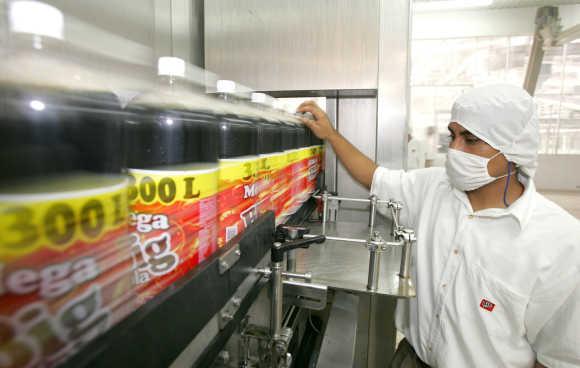

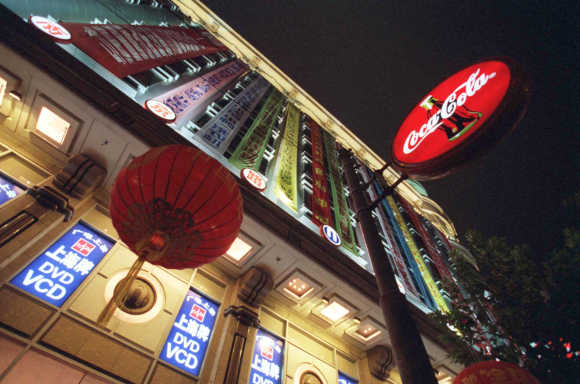
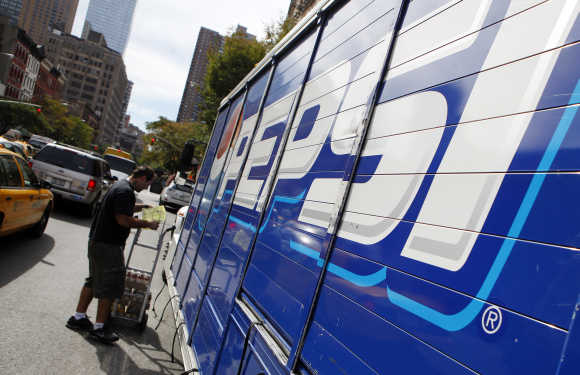
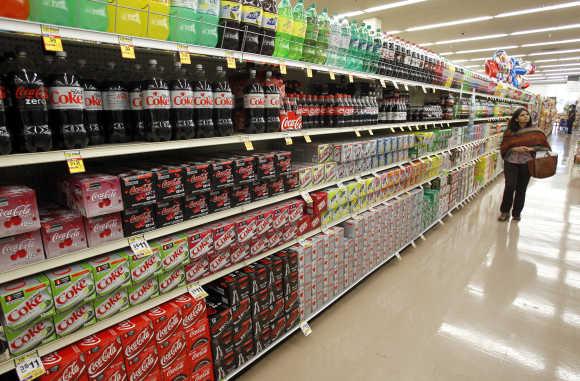

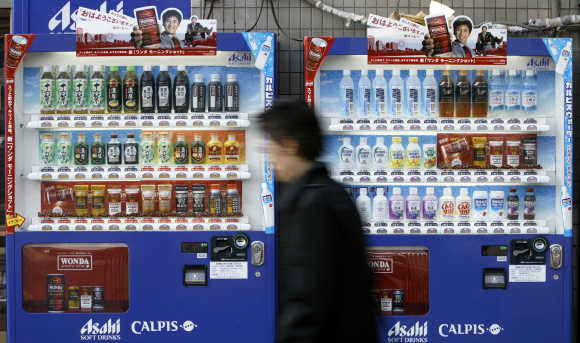
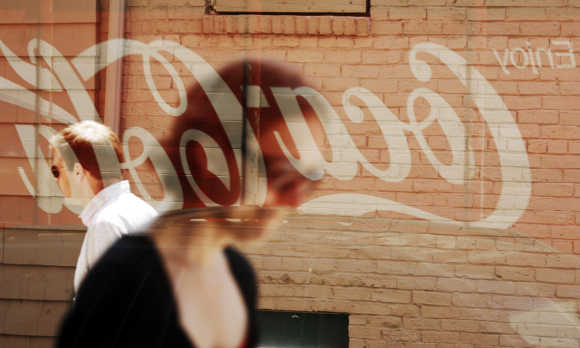

article